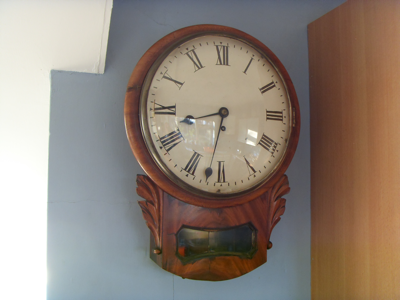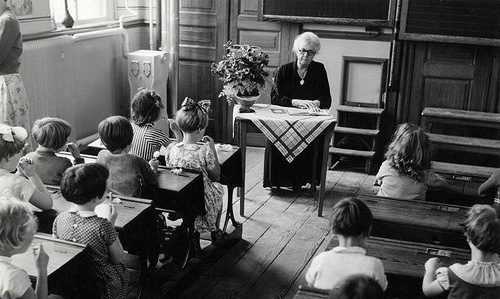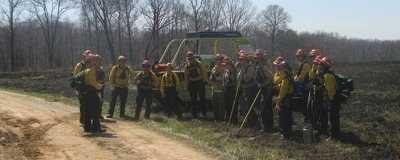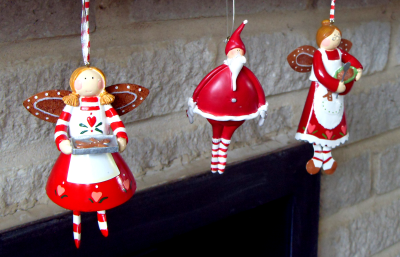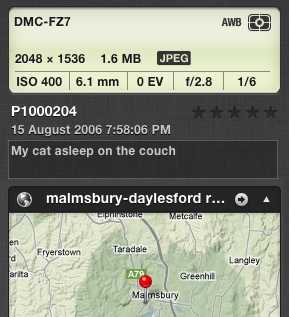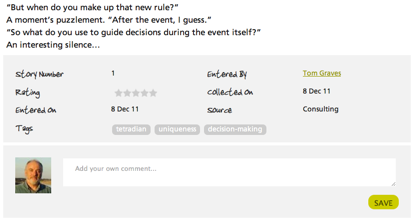Linking between stories in Zahmoo
One of the best ways to add value to your story-bank is to create links between stories.
Links are a type of metadata: “this goes with that”, rather than a story in its own right. Sometimes, though, another kind of story arises from patterns and trends that we can see from the connections – and in business, in a community, and even in a family-history, those can be some of the most important stories we can find.
But to find those patterns, we first have to create the links. In Zahmoo, there are several ways you can do this.
The first option is to use the built-in Related-story function in Zahmoo. This uses the ‘Story-number’ field – automatically created by Zahmoo when you post a new story, and shown in the top-left of the grey box directly under the text on the story-display page. It’s also shown to the left of each story-summary in the search-results page.
There are two ways to create a Related-story link. The first method assumes that you’ve already created both stories:
- find and note the story-number of the story you want to link to
- open the detail-page for the story you want to link from
- over on the right of the detail-page there’s a grey bar that will list any existing related-story links, and a form marked ‘Story-number’
- enter the story-number of the other story, that you’d previously noted, and click the ‘Link’ button
- the title of the story will now be shown in the list on the right, above the ‘Story-number’ form
- click on that link to take you to the detail-page for the other story; you’ll note that the ‘Related stories’ list for this story now also includes a link back to the story you’d linked from
The other way to create a Related-story link is only available when you’re about to add a new story. At the top of the detail-page for any story, you’ll see a button marked ‘New related story’. If you click on that link, rather than the ‘New story’ button, the new story that you create will automatically include a link back to the story where you’d started, and vice versa.
At present, there’s no comment attached to the link itself, so you might want to add a comment to each story to say why you’ve linked them together.
This works for all story record-types: text, audio, video and image. And you can link between story record-types, too – an easy method to associate a photograph with a family story or an in-person audio-interview. Useful!
In the next post we’ll explore two other ways to link between stories: using comments, and using tags.
—
Image credit: Threads by The Big Quack under a Creative Commons BY-2.0 licence.
Filed in: For Business, For Community, For Family, How to
Permalink | Comments Off on Linking between stories in Zahmoo
Things and stories
That old clock at my mother’s house sits up there on the kitchen wall, between the cupboard and the stair-rise. Its quiet yet insistent twice-a-second tick – one-a-two-a-three-a-four-a – is oddly calming even on a busy day. It’s been in the family for many generations now, ever since it was made. I’d always thought it was a station-clock, but I’m told it goes a long way further back than that – another half-century or more before any train even existed, back to the days when the story-bank was grandmother, telling the children her stories beside the flickering firelight, to the rhythm of the quiet ticking of the clock.
Whilst writing this, a documentary is running on TV in the background, about the Staffordshire Hoard, a huge crumpled collection of Anglo-Saxon ‘warrior bling’ dug up a few years back from a muddy field in middle England. “And then”, says the presenter, “there’s this” – and in white-gloved hands he holds up a palm-sized triangular knob of gold, embedded with blood-red garnets in a beautifully-figured ground:
This hung at the side of an Anglo-Saxon warrior, who must have habitually rested his left hand on his sword. Look at the polish on the top of that, where the man’s hand was resting on his most treasured possession, the hilt of his sword. This all meant something to someone, it’s not art for art’s sake, there are stories and things in it.
So too with the clock. I’ve wound it many times now, once a week, twenty-eight half-turns of its small brass key; yet it’s seen at least ten thousand weeks pass by, in different kitchens, different households, different times. How many stories has it known? How many stories have been told about it, or in which it has figured? I know that one family-member covets it, treasures its future possession with an almost desperate longing – yet would probably sell it on after a year or two, even though its real value is more in the stories it holds. Sad.
What are those ‘things’ that matter to you, to your family, your community, your business?
What is it that can make even an everyday object seem so precious to us?
What is it that we each value in those things, and why?
“This all meant something to someone, there are stories in it” – what, for you, are the meanings and stories that are connected with each of those objects?
And in what ways do those stories, and the objects themselves, help to connect people together, or to pull them apart?
Use Zahmoo to help you capture those stories, and the stories-within-stories – and keep their richness and meaning for your own future generations.
Filed in: For Business, For Community, For Family
Permalink | Comments Off on Things and stories
Capture the essence
Whether you’re gathering stories about your family, community or business, what matters most is capturing the essence of the story, capturing the core of it with as much clarity that you can. Anything more than that is just a bonus, really.
Zahmoo provides a safe place to capture, keep and comment on your stories and story-fragments. Yet in most cases you’re unlikely to publish direct from Zahmoo itself: you’d more often re-use the content in another form, another medium. So unless you want to do so, you don’t need to capture every story in perfect classroom prose.
Often just a small set of dot-points will suffice: you can always polish it up later if need be. All you really need in your story-bank is enough to help you remember the story, and help others remember and re-use the story as they need.
As we’ve seen in previous posts here, key points to capture would include:
- the players, the actors in the story, their respective roles
- the place and other context for the story
- the events, the structure and sequence of ‘what happened next’
- the triggers that make it more of a story: “something unexpected happens”
Watch also for the small details that matter – the things that seem somehow to suddenly stand out from the background, and help to make the story more memorable.
But beyond that, relax! You’re not in that old classroom now: polished perfection may be important, but that comes later down the line. Concentrate first on capturing the essence of the story, the parts that matter most in making it a story to remember.
(Thanks to Shawn Callahan for suggesting this topic.)
—
Image credit: Schoolklas begin jaren ’50 / Dutch classroom around 1950 by Nationaal Archief under a Commons (no copyright restrictions) licence.
Filed in: For Business, For Community, For Family, How to
Permalink | Comments Off on Capture the essence
Zahmoo in action-learning
How do we learn in action? How do we improve the effectiveness of what we do – particularly when working together with others?
(This theme is perhaps most for businesses and action-based communities, though it can be useful for family-storytelling too.)
One proven strategy is to set up what’s known as a ‘learning-loop’. In practice, much of it is based around stories, so Zahmoo can provide valuable support for this.
A popular technique here is the After Action Review. It’s simple, quick, and easy to do: it consists of just four questions, backed up by two rules. And it can be done anywhere, at any time, straight after any kind of action where there’s an opportunity to improve collective skills.
The four questions provide the structure for a brief four-part story, which we can store in Zahmoo:
- What was supposed to happen?
What was the plan, the purpose of the action? What had each person intended to do?
- What actually happened?
This is where our skills in story-listening will help: we encourage each person to describe their view of the story.
- What was the source of the difference?
Again, use story to help ‘connect the dots’: to use another quote from the Anecdote website, “words are how we think, stories are how we link”.
- What can we learn from this, to do differently next time?
This is the most important part, the ‘lessons-learned’ and commitment to change, identifying what each person can do to “do it differently next time”.
The two guiding rules are equally straightforward:
- No blame!
The aim is to learn how to do things better – blaming won’t help anyone do that…
- ‘Pin your stripes at the door’
In shared-action, each has their own responsibilities, but no-one is ‘more important’ than anyone else…
So using those questions, and following those two rules, capture the overall story of the action, the learnings, and those personal commitments to change. Store all of this in Zahmoo as text, audio or video, typically as a single story-item. The metadata should include appropriate tags to identify the type of action, and each person who’s made a ‘commitment to change’ within that After Action Review.
The real value comes not from the story alone, but from how we use that story to support shared-learning. For this, set up a regular process to scan through your Zahmoo story-bank and review those past actions and commitments.
— When planning a new action, what happened in similar past events? What can be learned from that? How might we change the plans, to do things better each time?
— For each person, what did they commit to change? Have they done so? What have they learnt and done towards supporting that change? What help do they need in making that happen?
For each of these, record those updates within Zahmoo as comments to the story.
Keep learning with Zahmoo!
—
Image credit: After Action Review by U. S. Fish and Wildlife Service – Northeast Region under a Creative Commons BY-2.0 licence.
Filed in: For Business, For Community, How to, Recording
Permalink | Comments Off on Zahmoo in action-learning
Zahmoo for writers
If you’re a writer, a journalist, a scriptwriter or novelist, no doubt you’ll find yourself collecting many of what Gerry Weinberg describes as ‘fieldstones‘. These are small fragments of story or dialogue that seemingly arrive at random – from our imagination, perhaps, or from snippets of real-life conversation overheard in passing. Often at first they won’t seem to have any specific place in any larger piece of work: but we know they’ll be useful for something. Which means we need to keep them somewhere safe, until we do know where they fit…
That’s where Zahmoo can come into this story, to provide a safe, secure, searchable place to store your ‘fieldstones’.
The key point about these ‘fieldstones’ of story is that we know they have a place somewhere: it’s just that we don’t yet know where. Most writing-tools organise material by project – but we don’t yet have a project where these would fit. So we keep them safe in Zahmoo until their right place turns up.
To do this, first set up your own Zahmoo story-bank. Remember that you can share a story-bank with others – your writing-partner, for example – which means that you can share and review your ‘fieldstones’ with those others too. A writing-group can share a common pool of ‘fieldstones’ to use and re-use in different ways across different people’s writing-projects, or to trigger new ideas. In Zahmoo, up to 20 people can share a Family story-bank, and no limit for a Community story-bank, so it’s simple to do this with a group of any size.
Once you’re set up, be ready to capture those story-fragments at any time in text, audio or video. They often arrive without warning, anywhere, anywhen: there’s a real skill in catching them as they pass by. And because Zahmoo is web-based, you can use a smartphone to save new ‘fieldstones’ to your story-bank from anywhere – you don’t even need to wait until you get home.
Most important, though: don’t forget the metadata! Zahmoo will automatically attach a timestamp to your story-record, but the rest is up to you: so do remember to add your own tags and keywords too, to help you find and match the ‘fieldstone’ to its appropriate place in a larger story at some future time.
Within Zahmoo, use tags and the search-box to help you find appropriate ‘fieldstones’ for use in your current project. It’s also useful to maintain the comments for each story-record, to help you keep track of which ‘fieldstones’ have been used in which projects and what ways: that can be especially important in a shared story-bank where ‘fieldstones’ might be used and re-used by different people.
That’s one way for writers to use Zahmoo: what other ways have you found? Please let us know!
[Many thanks to Shawn Callahan of Anecdote for the idea for this piece.]
—
Image credit: GLS writing-group by Christopher Holden under a Creative Commons BY-2.0 licence.
Filed in: For Community, For Family, How to
Permalink | Comments Off on Zahmoo for writers
Reflection and story
It’s January, the month named for Janus, a Roman god with two faces: one facing towards the future, one still facing the past. Reflecting on stories, in many different senses…
What do you hope for in the future that is this coming year? What can you learn in reflecting on the year that’s just passed? This is where a storybank such as Zahmoo can really help, in your business, your community, your family, and in your own life too.
Making a habit of capturing stories is the key to this: in order to reflect on what’s passed, we first need a story to reflect on.
So at key intervals or key events – such as end-of-year, or anniversary, or birthday – we record an ‘intentions story’: hopes and dreams for this coming period in the future, intended actions and intended results. ‘New Year Resolutions’ are a classic example of this, but perhaps go a bit deeper here, more into the why of the story.
Use the guidelines in ‘Listening for the story‘ to help you in this. Whether you’re doing this for yourself or with others, remember to elicit images about:
- the players, the expected actors in this future story, and their respective roles
- the place and context expected in each part of this ‘story of the future’
- the events and outcomes that you expect to mark this story
The traditional tactic is to record these ‘future stories’ in written form, in a diary or the like. You can do the same in Zahmoo, of course, yet remember that Zahmoo also allows you to capture and keep stories as audio or video – which may be a much easier way to do it.
In your Zahmoo storybank, tag the story with appropriate metadata. These would typically include:
- name of the person whose ‘future story’ this is
- tag to indicate that this is a ‘future story’
- suggested review-date – next year, next anniversary or whenever
Whilst working within Zahmoo over the weeks and months and years, build a habit of checking for the review-date for these ‘future stories’. When the review-date comes round again, review each story, preferably with the people whose ‘future story’ that was. What actually happened, in that ‘future’ that is now past? How did things work out? What worked, and what didn’t? Some dreams may have been dashed, perhaps, but no doubt there were unexpected successes too. Record the results of that reflection in the ‘Comments’ section for the story in Zahmoo.
And what further stories does this reflection bring up for each person? Capture those stories in Zahmoo too, watching for those same key items that make a meaningful story: people, places, events and the story-trigger of ‘…and something unexpected happened’.
In what ways do these stories connect with or reflect key themes such as your community’s vision and values? Use tags and other metadata in Zahmoo to cross-link between these stories and themes.
Reflection on story in this form is one way in which we can use Zahmoo to help us learn anew from the future.
—-
Image credit: Santa Barbara Sunset, 31 January 2006 by Doc Searls under a Creative Commons BY-2.0 licence.
Filed in: For Business, For Community, For Family, How to
Permalink | Comments Off on Reflection and story
Stories of celebration
They come out each Christmas, those very domestic angels, hanging above the fireplace with their gingerbread-tray and cake-mixing bowl, and the rotund Santa Claus between them.
In front of the bookshelves, my mother counts the Christmas cards, clicking on the small grey clicker-counter in her hand, a relic of the long-closed library. “One hundred and twenty four so far this year”, she says, proudly. She’ll head out soon to a family gathering, with all the generations there – her children, grandchildren, and great-grandchildren too. An everyday ritual, returning every year: a quiet celebration of another year’s passing.
What do you celebrate, in your family, your community, your business? And why? Where, when, and how? – how do you celebrate? What stories do those celebrations bring up? What memories do they bring back for you? What kinds of meaning?
What are your stories of celebration? Use Zahmoo to help you capture and keep those stories for your future generations.
Filed in: For Business, For Community, For Family
Permalink | Comments Off on Stories of celebration
Listening for the story
How do we collect stories? How do we know which stories to collect, and why? For that matter, what is a story, in the sense that we use it in Zahmoo?
For practical answers to those questions above, one of our best resources is the Anecdote website. If we need ideas about how to use story for family-history and the like, or to help our community work better, or our business succeed in its aims, that’s one of the first place we would go for advice.
For example, how do we collect stories? The first part, perhaps, is to pick a good place and time, and get ready. But once there, what we need next is story-triggering, to get people talking along the lines that we need. There’s a great post about this on the Anecdote weblog: ‘Storytelling for non-storytellers‘, with a really helpful list of ‘open questions’, to encourage people to give us answers that are more than just ‘Yes’ or ‘No’. Use those questions with the improv technique of ‘yes-and’ to lead our storytellers to tell us more.
Another key skill we need is story-listening – actively listening to our story-tellers. For advice on that, see the Anecdote post ‘Listening, mentoring, storytelling‘: for example, it’s important to remove distractions, ask good ‘open-questions’, keep the flow going by telling stories too, and show that we are listening:
Body language is the other way to show you’re listening. You know what to do. I find it fascinating to watch body language in our workshops. When we are sharing opinions people lean back and have that “prove it to me” look on their faces, but when are sharing stories everyone leans forward.
We also need to know what makes a useful story. What we look for, in the everyday flow of narrative, are specific key items:
- the players, the actors in the story, their respective roles – though note that in a business-context especially, these can sometimes be machines as well as people
- the plan or the place – the context of the story
- the events – the structure and sequence of ‘what happened next’
- the trigger that makes it into a true story: “something unexpected happened”
That’s what we need: people, place, events, and ‘something unexpected happened’ – because it’s in that ‘unexpected’ that key learnings take place, that a family or community or business learns more about what they stand for and who they really are. To bring this all together, see the Anecdote post ‘Making the most of story-work‘: it’ll help you a lot in gaining the best value from your stories.
And remember too that whilst stories themselves are important, they’re only one small part of what can be done with story-work in business and elsewhere. Take a look at some of the other resources on the Anecdote website, such as the whitepaper ‘How to use stories to size up a situation‘: there’s a lot of value there. And, when we use it to the full, a lot of value also to be gained from the stories and metadata that we collect in our Zahmoo story-bank. Use it well, and have fun with it, too!
—
Image credit: Difficult meeting by Simon Blackley under a Creative Commons licence http://creativecommons.org/licenses/by-nd/2.0/deed.en
Filed in: For Business, For Community, For Family, How to
Permalink | Comments Off on Listening for the story
Get ready for story-season
“‘Tis the season to be merry”, some say. For many people it’s also a season to reminisce and reflect, to look back at the passing year and years. Which means it’s also a time when the stories tend to flow free – so are you ready to catch them as they drift by?
Family gatherings and end-of-year parties are great opportunities to capture stories about the family, community or business. They’re places where people want to talk about the past, about lessons-learned, about hopes and fears for the future. If we’re building a story-bank, this is exactly where we’d need to be.
To get the best value out of those gatherings, we need to make sure we’re ready for them.
First, think about logistics: do you have the equipment that you need?
Good stories can appear and vanish in a moment – so you need to be ready for for them at a moment’s notice too. And being unobtrusive – such that you don’t break the flow of the stories – is an art-form in itself, and one that you’ll need to practice beforehand to get it right.
You’ll need a small notebook to hand at all times, of course. Yet remember you can store not just text in your Zahmoo story-bank, but audio, video and photos too. This is where all those gadgets start to show their real value…
People do tend to clam up on stories when they see someone writing in a notebook, or when a camera appears, so a small voice-recorder can be very useful here. I use a small purpose-built one in much of my regular story-work, but every smartphone and most feature-phones will have an app for this somewhere in the system. Practice with it beforehand, so that you know how to start and stop recording at any time, even in the middle of a conversation.
(Remember to ask for permission to record, of course; but once you’ve done so, they usually won’t notice the recorder again.)
Afterwards, review the recording to extract the stories. For Apple users, there’s a nice app for iPhone and iPad called Highlight, which makes it easy to tag key-moments in sound-files. There are plenty of other ways to do this, though: perhaps even a transcription-service, for business-use.
Once you’ve done that, save the stories in your Zahmoo story-bank, with appropriate tags and other story-metadata.
And ensure that you know how to recognise a story. For business-stories, Anecdote provides a useful self-test site called The Story Test: use that to attune yourself to the shape of a good story. Remember that a meaningful story will always have these key elements:
- people and place
- specific events
- “something unanticipated happened”
There’s often a learning in the story, though that’s not always the case. The real key is that a good story provides strong meaning: it helps us to tell ourselves who we are.
Most important, though, is that the best stories often appear without any warning, in the midst of the narrative-flow. So if you want to capture those stories for your story-bank, are you ready for story-season?
Filed in: For Business, For Community, For Family, How to, Recording
Permalink | Comments Off on Get ready for story-season
Don’t forget the metadata!
How do we know which stories to use, and for what purpose? What would each story mean, in real-world practice?
The answers to those questions often reside not in the story itself, but in the other information that we collate around that story – in other words, what’s known as the metadata for the story.
Think of all those old photographs you have around the house: it’s often difficult to remember when and where they were taken, who’s shown each photograph, what was happening at the time, and so on. To make sense of it, we need information about the context of the photograph – the metadata. So to help us with this, most modern cameras will automatically record the metadata for the photograph itself – such as camera-type, image-size, filename and file-type, film-speed, shutter-speed, date, time, and even the location – to which we can often add our own comments as well. This example of photo-metadata is as shown in iPhoto, on the Mac:
For stories in our story-bank, Zahmoo helps us in much the same way. It can’t automatically create much of our story-metadata, of course, but it does remind us to do so ourselves. For example, when you enter a new text-story, Zahmoo provides some extra fields below the main text-box on the entry-form:
Tags help you to identify categories, places, people, anything else you need. There are no predefined tags, so make them up in any way that you want. They should usually be single words, or at most a couple of words linked by hyphens or spaces. On the form, use commas to separate the tags. Note that Zahmoo stores tags as lower-case only, hence ‘Family’ and ‘family’ are regarded as the same.
The Collected-on date defaults to the current date, but you can change this if you need.
The Source field is a place to record where the story came from: a family- or team-member, perhaps, or a genealogy-archive, a website or a company anecdote-circle session. Again, these are only suggestions: it’s up to you how you use this field.
The Confirmed checkbox is set by default anyway, so you can think of it as optional. Its purpose is to give you somewhere to flag that a story-source needs to be confirmed, or the story itself fact-checked before re-use. Probably not relevant for a family story-bank, but often very useful for a business story-bank.
The person who posted the story, and also the person you’ve tasked as administrator for your story-bank, can edit these fields at any time. (Look for the small ‘edit’-icon shown to the left-side of the story in story-lists.) For everyone else, they’re read-only.
When stories are displayed in Zahmoo, this metadata is shown below the respective story:
You’ll see that there are two more metadata items there, that any registered story-bank member can use: ratings and comments.
The Rating for a story is a simple five-point scale: click on the stars to select a one-star to five-star rating. Once again, there are no predefined rules about this: how you use story-ratings is up to you and your story-bank members. To save your rating, click on the ‘Save’ button below the ‘Comments’ field – you can do this even if there’s no comment to save.
There are many different ways to use story-Comments. For example, use comments to let story-bank members comment on the story itself, or perhaps to keep track of how and when a story has been used in community events or business marketing-campaigns. Each comment is shown with the comment-author’s current photograph, as stored in their personal profile: that’s shown as a preview on the left-side of this form. Click the ‘Save’ button to attach your comment to the story-record.
Zahmoo provides you with some useful tools to manage your metadata: but it’s up to you to use them. So don’t forget the metadata! – that information can be almost as important as the story itself.
Filed in: For Business, For Community, For Family, How to
Permalink | Comments Off on Don’t forget the metadata!


